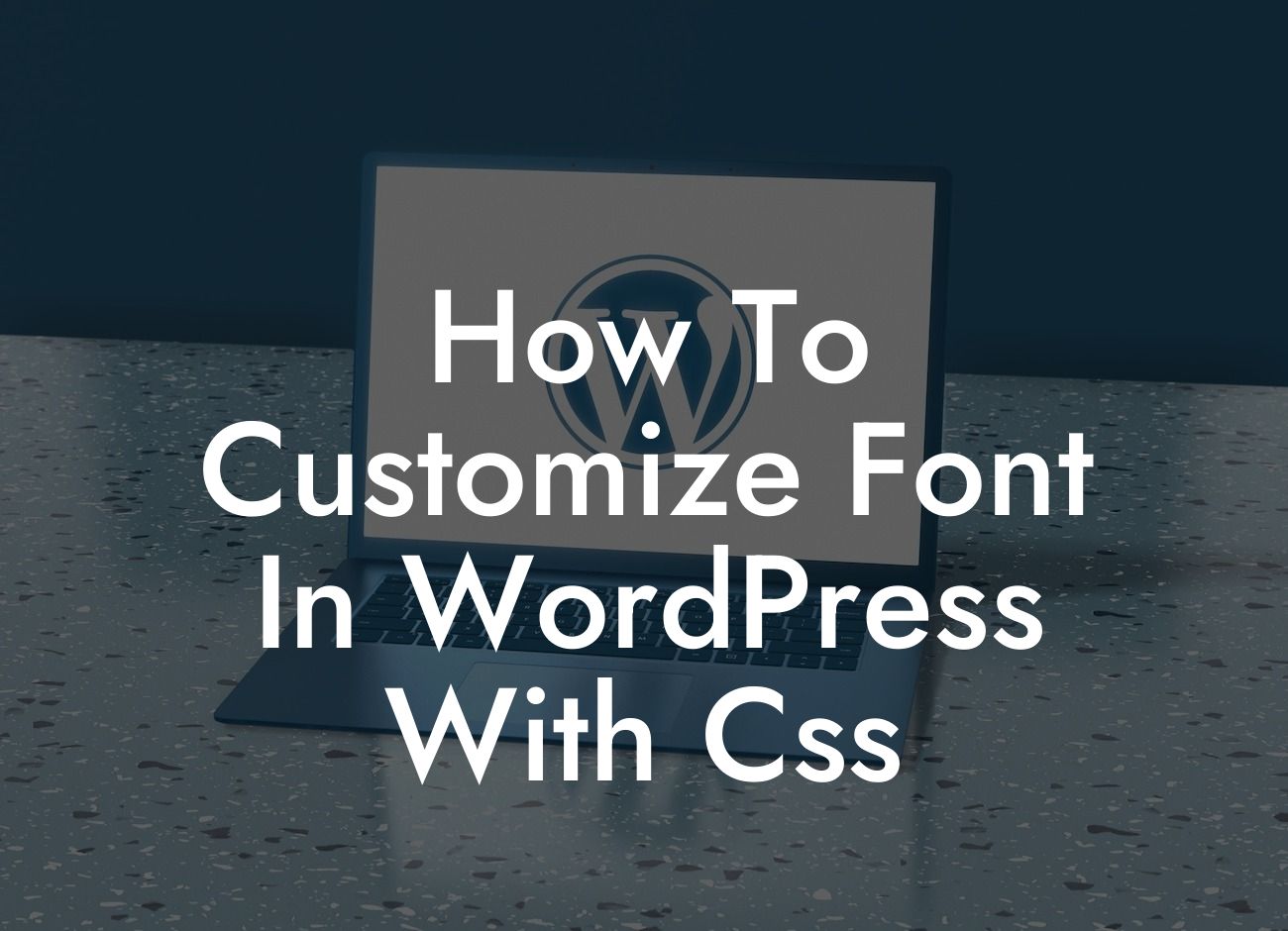Are you tired of the same boring fonts on your WordPress website? Do you want to make your website stand out with unique and creative typography? Look no further! In this article, we will guide you through the process of customizing fonts in WordPress with CSS. Say goodbye to generic fonts and embrace a one-of-a-kind look that reflects your brand and captivates your audience. With DamnWoo's exclusive plugins, you'll discover a world of possibilities for enhancing your online presence. Let's dive in and transform your website into a visual masterpiece.
H2: Understanding CSS and Its Role in Font Customization
CSS, short for Cascading Style Sheets, is a web design language that controls the visual appearance of your WordPress website. It governs various elements, including fonts, colors, layouts, and more. When it comes to font customization, CSS provides the flexibility and power to modify how text is displayed on your web pages.
H3: Step 1: Identify the Fonts You Wish to Customize
Before you embark on your font customization journey, it's essential to determine which specific fonts you want to modify. Take a careful look at your website and make a list of the sections or elements that you wish to enhance. Whether it's the heading, body text, or specific widgets, identifying these areas will guide your customization efforts.
Looking For a Custom QuickBook Integration?
H3: Step 2: Access Your WordPress Theme's CSS Stylesheet
To customize fonts, you'll need to access your WordPress theme's CSS stylesheet. This file contains the instructions that dictate how your website is styled. To access it, navigate to Appearance > Editor in your WordPress dashboard. Locate the stylesheet file (usually named style.css) and click on it to open the editor.
H3: Step 3: Find the CSS Selector for the Desired Element
Once you have accessed the CSS stylesheet, you need to find the CSS selector for the element you wish to customize. A CSS selector is a unique identifier that allows you to target specific elements on your website. You can find the selector by inspecting the web page using your browser's developer tools. Right-click on the element and select "Inspect" or "Inspect Element" to reveal the CSS code associated with it.
H3: Step 4: Apply Font Customizations Using CSS
With the CSS selector in hand, it's time to apply your font customizations. You can specify the desired font family, size, weight, style, and more using CSS properties. For example, if you want to change the font of all headings, you can use the selector "h1, h2, h3, h4, h5, h6" and apply the "font-family" property to modify the fonts across all headings.
H3: Step 5: Save and Preview Your Changes
After making the necessary font customizations, don't forget to save the changes in your CSS stylesheet. Once saved, refresh your website's page to see the new fonts in action. Marvel at the transformation and ensure that the new fonts align with your design vision.
How To Customize Font In Wordpress With Css Example:
Suppose you are a small business owner running a boutique clothing store. You want to convey a sense of elegance and sophistication through your website's typography. You can modify the font family of your heading elements to a classy serif font like "Playfair Display" or "Cormorant Garamond." By adjusting the size, weight, and other properties, you can create a visually appealing hierarchy that draws attention to your product descriptions and promotional offers.
Congratulations! You've unlocked the power of font customization in WordPress with CSS. Embracing unique typography can transform your website's identity and leave a memorable impression on your visitors. But why stop here? Explore other insightful guides and tutorials on DamnWoo to shape your online presence further. Don't forget to try one of DamnWoo's awesome plugins, designed exclusively for small businesses and entrepreneurs like you. Share this article with fellow website owners who aspire to make their websites extraordinary. Together, let's revolutionize the digital landscape with DamnWoo's innovative solutions.













